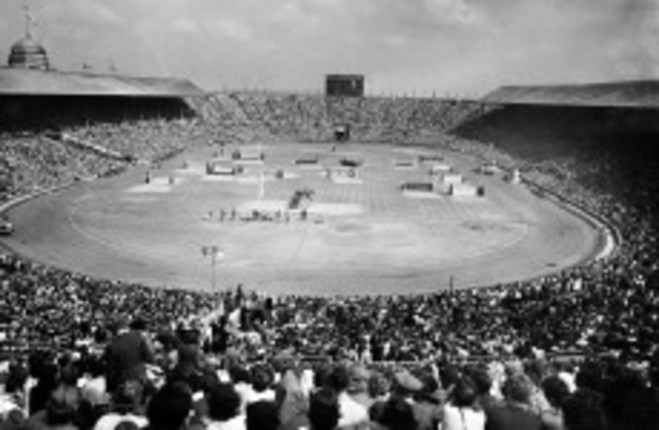1908, 1948, 2012: London is the first city to host a third Olympic Games, but the modest Games of the last century were worlds away from today’s glossy extravaganzas.
“The situations are so different that you really can’t compare them,” Anthony Bijkerk, secretary general of the International Society of Olympic Historians said. Just 2008 athletes, including only 37 women, took part in the first Olympics held in London, staggered over the months from April to October 1908.
“The 1908 games were the first well-organised and truly international Games of modern times,” said Bijkerk.
This was no mean feat, given that Britain took on the Games with just two years’ notice. Original hosts Italy had pulled out in 1906 in order to rebuild the city of Naples, following a massive eruption of Mount Vesuvius. US athlete Ray Ewry stole the show in 1908, leaping to golds in the standing high jump and standing long jump despite having been crippled with polio as a child.
His two specialities have since disappeared from the Olympic schedule, along with motorboat racing, the tug of war, and cycle polo. But some things haven’t changed since 1908. That year’s marathon was 42.195 kilometres (26 miles and 385 yards), so that it could begin west of London at King Edward VII’s Windsor Castle and end in front of his royal box in the stadium. The marathon remains this length today.
Team GB won more than half of the gold medals — 56, to the United States’ 23 — which, some suggest, may have had something to do with the fact that all the judges were British. Forty years later, a bomb-wrecked London played host again, despite the fact that its citizens — and its economy — were still reeling from World War II.
“Europe had just come out of this enormous catastrophic war and all the countries were very hard-up,” Cathy Ross of the Museum of London told AFP.
“But at the same time, I think there was an appetite to do something that brought the nations together. So London stepped in.”
The Austerity Games, as they were quickly nicknamed, took place in a battered capital on a shoestring budget. Athletes slept in military barracks and school dormitories, and had to provide their own equipment. Nevertheless, the size of the teams had doubled since 1908, with 4,104 athletes from 59 nations taking part, including 390 women.
But there were several glaring absences: Germany and Japan, as “aggressors” in World War II, were not invited, the Soviet Union declined to send any athletes, and China was busy forming the People’s Republic. In 2012, more than 10,000 athletes from 205 countries will take part and the £9.3 billion (€11.6bn) budget is 1,000 times that in 1948.
Three years after the end of the war, food was still being rationed in Britain. Its athletes were fed bigger rations, equivalent to those given to miners, to boost their chances of success. Whale meat was not rationed, and many competitors, desperate for protein, reluctantly swallowed it down.
Jose Beyaert of France crosses the line to win gold in the road race. Sport and General/S&G and Barratts/EMPICS Sport
Several countries had their own food shipped over, and sometimes shared this with the other teams. The Netherlands sent 100 tonnes of fruit and vegetables for all of the athletes, while Denmark donated 160,000 eggs.
Spain and France insisted on bringing wine into the country, and were allowed to do so after the authorities carried out research into competing nations’ culinary habits.
“The point is, of course, that for such competitors, wine is part of their normal diet, and in their view at any rate, is a food-stuff,” official documents noted.
Dutch sensation Fanny Blankers-Koen was the undisputed star of 1948. Nicknamed the Flying Housewife, the 30-year-old mother of two won the 100 metres, 200 metres, 80 metre hurdles and the 4×100 metres relay, on dirt tracks designed for greyhound racing.
But her medals, like the rest of that year’s batch, were made of oxidised silver rather than gold.
“The gold layer on her medals was so bad, she had to redo them several times,” Bijerk recalled.
Despite the hard times, 1948 was an innovative year for the Olympics. They were the first to use the photo-finish camera, and the first to be publicly televised, albeit just to buildings within a short range of the stadium rather than to the billions who will watch this year.

